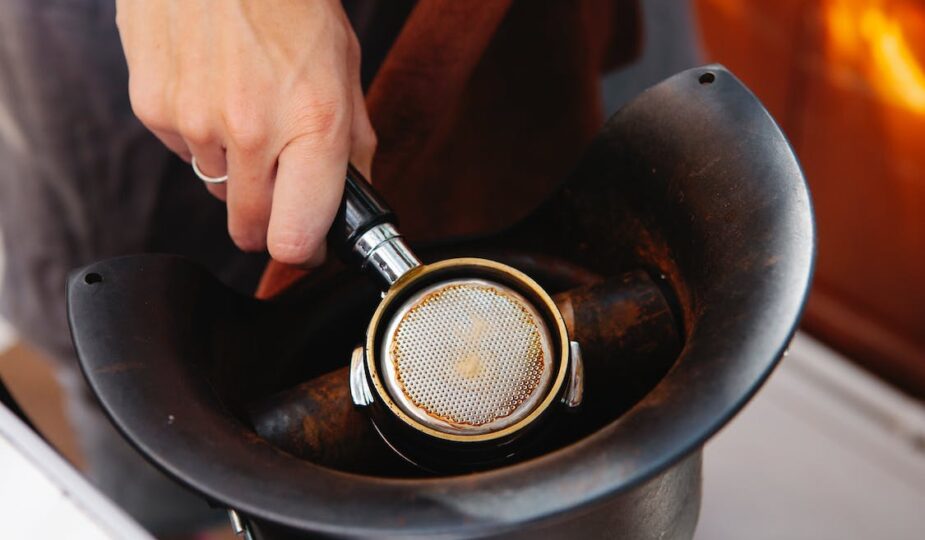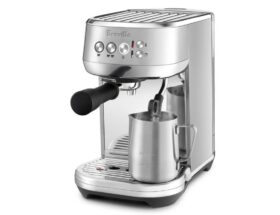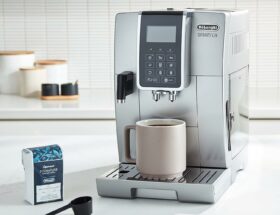
Preventing Grounds in Your Coffee: Any Maker
Welcome to the ultimate guide on how to prevent grounds in your coffee, no matter what kind of coffee maker you use! Preventing Grounds, or sometimes referred to as Preventing Static, well there’s nothing worse than savoring that first sip of your morning brew only to be greeted with a mouthful of unwanted coffee grounds. Fortunately, with a few simple tips and tricks, you can bid farewell to gritty coffee forever.
Whether you’re a fan of the classic drip coffee maker, French press, or even a single-serve pod machine, we’ve got you covered. So sit back, grab your favorite mug, and let’s dive into the world of brewing without Grounds in my Coffee!
Table of Contents
Background Information
One common frustration for coffee lovers is finding grounds in their brewed coffee. There’s nothing more disappointing than taking a sip and feeling the gritty texture of coffee grounds on your tongue. Not only does it ruin the smooth, velvety experience of enjoying a great cup of coffee, but it can also affect the overall flavor and aroma.
The presence of coffee grounds in your cup can stem from various factors, and it’s crucial to understand how to prevent them. Whether you’re using a traditional drip coffee maker, a French press, or even a high-tech espresso machine, this blog will guide you on the steps you can take to ensure a grounds-free coffee experience.
Preventing Grounds in Your Coffee: Any Maker
Introduction
Coffee grounds floating in your cup can ruin a perfectly enjoyable morning routine. No one wants a gritty texture or a bitter taste to start their day. Luckily, there are simple steps you can take to prevent grounds from infiltrating your morning brew, regardless of the coffee maker you use. In this blog post, we will explore some effective methods to ensure a delicious, smooth cup of coffee every time.
1. Quality Beans and Grind
The foundation of a good cup of coffee lies in the quality of your beans and their grind size. Invest in fresh and properly roasted whole beans that suit your taste preferences. Additionally, make sure to grind the beans just before brewing to maintain freshness and flavor. Adjust the grind size based on your brewing method: fine for espresso, medium for drip coffee, and coarse for French press.
2. Filtered Water
Water quality has a significant impact on the taste of your coffee. Using filtered water eliminates impurities and ensures a clean flavor profile. Avoid using tap water as it can contain minerals and impurities that affect the taste and cause grounds to appear in your cup.
3. Proper Measurements
Accurate measurements are crucial to consistently brewing a good cup of coffee. Use the recommended coffee-to-water ratio for your specific brewing method. This helps prevent over-extraction and reduces the chances of fine particles making their way into your coffee.
4. Use the Right Filters
Choose the appropriate type of filter for your coffee maker. Paper filters are excellent at trapping coffee grounds, ensuring you get a smooth cup. Alternatively, metal filters are reusable and environmentally friendly, but may allow some fine particles to pass through. Consider personal preferences and convenience when selecting filters.
5. Patience is a Virtue
Rushing the brewing process can lead to coffee grounds slipping through the filter. Allow sufficient time for your coffee to brew completely and avoid the temptation to hurry. It’s worth the wait to savor a grit-free cup of coffee.
6. Maintenance Matters
Regular cleaning and maintenance of your coffee maker are essential to prevent grounds from building up and finding their way into your brew. Follow the manufacturer’s instructions for cleaning and descaling to keep your machine in optimal condition. Replace filters as recommended to ensure efficient filtration.
Tips and Recommendations
- Grind your coffee beans correctly: To prevent grounds in your coffee, ensure that you grind your beans to the appropriate consistency. Too fine of a grind can lead to a clogged filter and grounds in your cup. Experiment with different grind settings to find the perfect balance.
- Use a high-quality coffee filter: Investing in a good coffee filter can make a significant difference in preventing grounds from ending up in your coffee. Look for filters made of sturdy material that can effectively trap the grounds without impacting the flavor of your brew.
- Don’t rush the brewing process: When using a coffee maker, avoid rushing the brewing process. Allow the water to flow through the coffee grounds at the optimal pace determined by your machine. Rushing can lead to overflow and grounds finding their way into your coffee cup.
- Practice proper measurement: Using the right amount of coffee grounds is crucial to avoiding excess sediments. Follow the recommended coffee-to-water ratio to ensure a well-balanced and sediment-free cup of coffee.
- Invest in a quality coffee maker: A well-designed coffee maker can go a long way in preventing grounds in your coffee. Look for a machine that offers a built-in grinder or uses a reliable filtering system to ensure maximum extraction without the risk of ground contamination.
- Keep your coffee maker clean: Regularly clean your coffee maker to prevent the buildup of coffee residue and oils, which can contribute to grounds finding their way into your brew. Consult your coffee maker’s manual for specific cleaning instructions.
- Experiment with alternative brewing methods: If you consistently encounter grounds in your coffee despite following the tips above, consider exploring alternative brewing methods that might offer better results. Options like pour-over, French press, or espresso machines with proper filters can provide a more controlled brewing process.
Frequently Asked Questions
1. What causes grounds in my coffee?
There are a few factors that can cause grounds to end up in your coffee. The most common reasons include:
- Using a coffee grinder that produces inconsistent grind sizes
- Using a coffee filter that is too thin or fine
- Using too much coffee grounds for the brewing method
- Improperly fitting or damaged coffee maker parts
- Not using a proper brewing technique
2. How can I prevent grounds from getting into my coffee?
To prevent grounds from ending up in your coffee, follow these tips:
- Invest in a good quality coffee grinder that produces consistent grind sizes.
- Choose coffee filters that are specifically designed to catch smaller particles, or use a reusable metal filter.
- Measure your coffee grounds according to the recommended ratio for your brewing method.
- Regularly check and replace any damaged or ill-fitting parts of your coffee maker.
- Master the proper brewing technique and be mindful of the pouring speed and angle.
3. My coffee maker still produces grounds despite following the tips. What should I do?
If you are still experiencing grounds in your coffee despite following the prevention tips, consider trying the following:
- Experiment with different coffee beans and try a different brand or roast level.
- Adjust your coffee grinder settings to a slightly coarser grind size.
- Double check that your coffee maker is assembled correctly and that all parts are in good condition.
- Consult the manufacturer’s instructions or reach out to their customer support for further assistance.
4. Can I salvage a batch of coffee with grounds in it?
If you accidentally end up with grounds in your brewed coffee, you can try using a fine-mesh sieve or a cheesecloth to strain out the grounds. However, keep in mind that this may affect the flavor and aroma of the coffee.
Conclusion
In conclusion, preventing grounds in your coffee is not only possible but also essential to enhance your coffee drinking experience. Whether you use a French press, drip machine, or any other coffee maker, by following these simple tips and tricks, you can avoid those unpleasant leftover grounds in your cup.
We would love to hear from you! Have you solved the issue of Ground in you coffee? Which one is your favorite method to remove the coffee static? Let us know in the comments below and join the coffee conversation!






